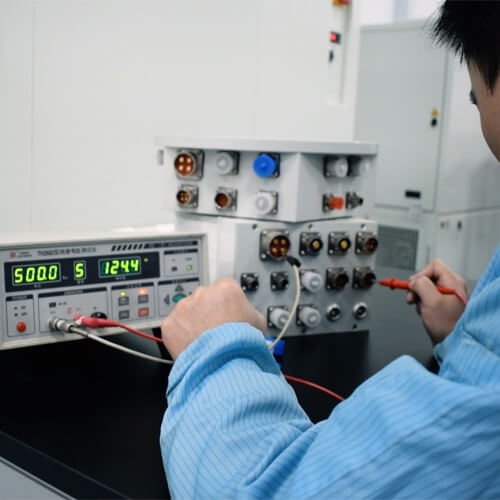This comprehensive article delves into the world of slip ring manufacturer, unveiling the intricacies and innovations that characterize this critical component in various industries such as aerospace, defense, and automotive. Slip rings are essential for transmitting power and data across rotating interfaces, and their performance is pivotal in numerous applications, from wind turbines to medical equipment. Through this article, readers will gain an in-depth understanding of slip ring technology, including how slip rings work, the different types available, and recent advancements that have been made in their design and materials. A pivotal section focuses on key industries and applications, shedding light on the specific requirements and challenges faced in each sector. The article further guides readers through the critical criteria for selecting slip ring manufacturers, including quality assurance, customization options, and reliability, followed by a comparative analysis of leading global suppliers. Challenges currently facing the industry, as well as future trends and predictions, are also thoroughly explored, providing a well-rounded perspective for anyone in the process of evaluating slip ring manufacturers for their needs.
Introduction to Slip Ring Manufacturers
What Are Slip Rings and Their Primary Function
Slip rings, often regarded as the unsung heroes of the electrical component world, play a crucial role in facilitating both the transmission of power and electrical signals across rotating interfaces. Imagine the complexity of a wind turbine blade that constantly turns yet requires power to operate sensors located on the blade; here, slip rings provide the seamless transfer of electricity and data, ensuring operational efficiency and safety. Essentially, they are sophisticated devices that manage to maintain an electrical connection between a stationary system and a rotating one, enabling the latter to spin freely without getting its wires tangled or damaged.
The Keystone of Modern Industries: Slip Rings
The application of slip rings transcends a multitude of industries, each with its unique set of demands and challenges. In the aerospace sector, for example, slip rings are integral to the functionality of satellites and radar systems, ensuring that signals are reliably transmitted from moving parts. The defense industry, on the other hand, relies on slip rings for the operation of turrets, missile launchers, and other mobile platforms, where flawless communication and power supply are non-negotiable for mission success. Automotive applications, too, have seen an uptick in slip ring utilization, particularly in advanced safety systems and electric vehicles, highlighting their pivotal role in innovation and safety enhancements. Each of these sectors not only underscores the versatility of slip rings but also the critical nature of choosing the right manufacturer to meet stringent operational requirements.
Navigating the World of Slip Ring Manufacturers
This article aims to delve deep into the realm of slip ring manufacturers, unveiling the technologies that drive their products, the diverse applications they cater to, and the criteria that should guide the selection process. We will embark on a comparative analysis of global players, touching upon the challenges they face and the future trends that are shaping the industry. Real-world case studies and expert insights will be employed throughout to elucidate the monumental impact of slip rings across various sectors and the considerations that magnify their importance in groundbreaking technological advancements. By the end, readers will not only have a comprehensive understanding of slip ring manufacturers but also the actionable knowledge to make informed decisions tailored to their specific needs.
What Is Slip Ring Technology: Slip Ring Manufacturers
Navigating through the intricacies of slip ring technology offers a fascinating glimpse into the marriage of mechanical engineering and electrical innovation. At its core, the functionality of slip rings is predicated on a simple, yet ingenious principle—creating a continuous electrical connection between a stationary and a rotating platform. How this is achieved, the variety of designs available, and the innovations steering the future of slip ring technology are pivotal in understanding what to look for when evaluating manufacturers.
How Slip Rings Work: Bridging Rotational Boundaries
Imagine a scenario where a lighthouse lamp needs to rotate continuously to emit light across the vast sea, yet requires a constant electrical connection to power the lamp. This is where the magic of slip rings comes into play. At its simplest, a slip ring consists of a stationary graphite or metal contact brush that rests against a rotating metal ring. As the ring turns, electrical current or data signals are transferred across this contact point, ensuring uninterrupted operation of the device it powers. This seemingly simple interaction is critical in applications requiring endless 360-degree rotation, from CCTV cameras to medical equipment, where reliability and precision are paramount.
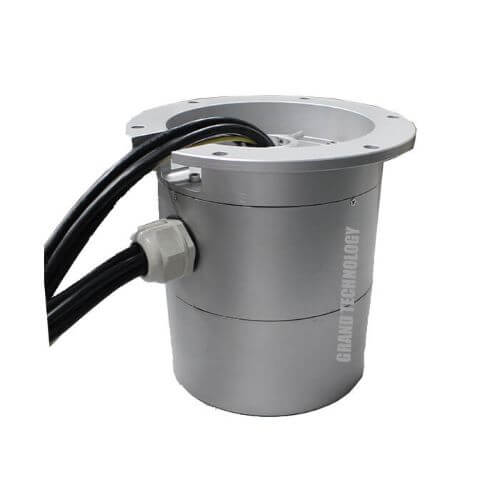
The Spectrum of Slip Ring Types
Diving deeper, slip rings are not one-size-fits-all; they come in various shapes and configurations to meet diverse application needs:
- Capsule Slip Rings: Compact and versatile, capsule slip rings are designed for small, space-constrained applications. Enclosed in a cylindrical housing, they are often found in cameras, robotics, and other precision instruments, where their small footprint makes a big difference.
- Through-Bore Slip Rings: Characterized by a hollow shaft at their center, through-bore slip rings cater to applications needing a central passage for mounting or routing other components, such as in wind turbines or medical machinery, allowing for an elegant integration of mechanics and electronics.
- Pancake Slip Rings: With a focus on minimal axial length, pancake slip rings are flat and are used when space is limited in the vertical direction. They are ideal for equipment where height is a constraint, but diameter is not, such as in satellite antennas and some types of machinery.
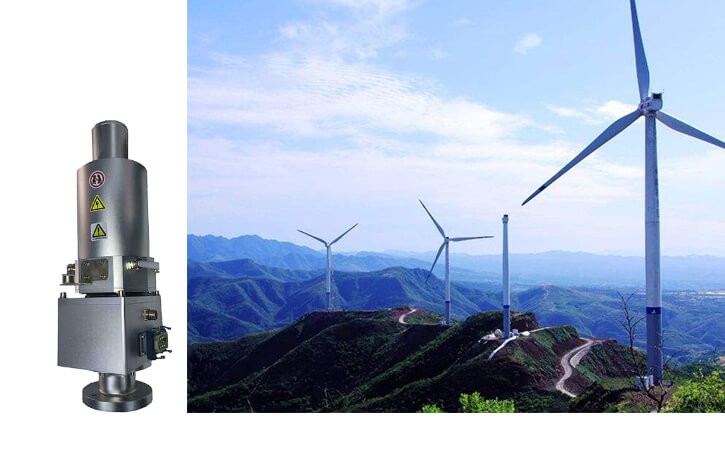
Innovations Shaping Slip Ring Technology
The evolution of slip ring technology is a testament to the relentless pursuit of higher performance, durability, and adaptability. Recent innovations have seen the introduction of advanced materials, such as gold-gold contacts, offering superior conductivity and minimal resistance, which translates to more reliable signal and power transmission. Another leap forward is the integration of wireless technology to transmit data, thereby reducing wear and tear and extending the lifespan of slip rings used in high-speed applications.
Manufacturers are also embracing customization and modular design, allowing slip rings to be specifically tailored to the unique requirements of an application, be it in terms of size, capacity, or environmental resilience. This adaptability enables industries to push the boundaries of what’s possible, from the depths of the oceans to the vast expanse of space.
Key Industries and Applications of Slip Rings Manufacturers
The versatility of slip rings has paved the way for their adoption across a broad spectrum of industries, each leveraging the technology to enhance performance, reliability, and innovation. This section explores the pivotal role slip rings play in wind turbines, robotics, and medical equipment, shedding light on how specific slip ring types are tailored to meet the demanding requirements of these sectors.
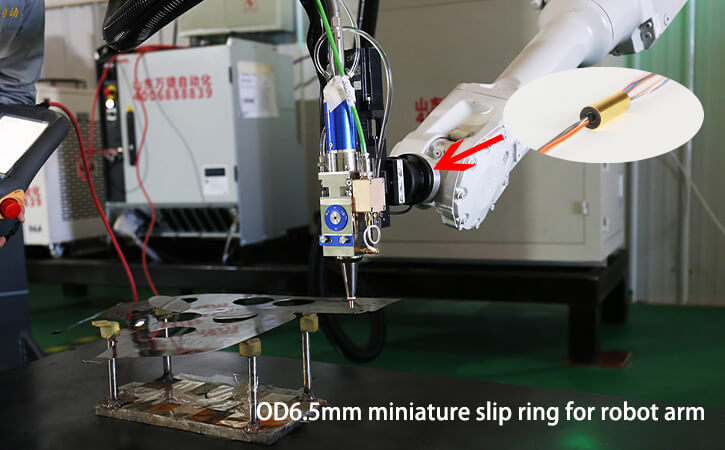
Wind Turbines: Powering Renewable Energy
In the quest for sustainable energy solutions, wind turbines stand tall—both literally and figuratively. Here, slip rings serve a critical function by allowing the turbine blades to rotate freely, ensuring uninterrupted transmission of power and data between the stationary tower and the moving nacelle. Through-bore slip rings are commonly employed in this context, catering to the turbines’ need for a central passage to route hydraulic or pneumatic lines. The impact of slip ring performance in wind turbines cannot be overstated; enhanced durability and reliability directly translate to increased energy production and reduced maintenance costs, underscoring the importance of high-quality manufacturing in the renewable energy sector.
Robotics: Enabling Advanced Automation
The robotics industry, known for its relentless pursuit of precision and efficiency, relies heavily on slip rings to facilitate the continuous 360-degree movement of robotic arms. This is particularly evident in manufacturing and assembly processes, where robots perform repeated tasks with unerring accuracy. Capsule slip rings are favored in these applications for their compact size and high performance, allowing for seamless integration into the intricate architecture of robotic systems. The role of slip rings in robotics extends beyond mechanical functionality; they ensure that data and control signals are consistently transmitted, thereby enabling advanced automation capabilities and real-time monitoring.
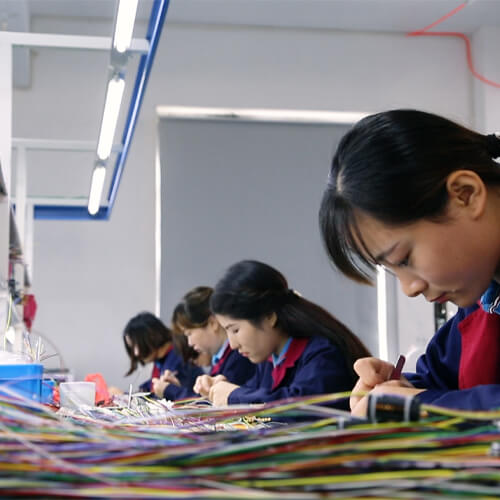
Medical Equipment: Revolutionizing Patient Care
Medical technology often involves life-saving equipment that demands the utmost reliability; slip rings contribute significantly to this domain through their application in CT scanners and MRI machines. These devices require slip rings to not only manage power delivery but also facilitate the transfer of high-speed data, ensuring crystal-clear imaging. Pancake slip rings are chosen for their flat design, minimizing the axial length and optimally fitting into the compact spaces of Medical Equipment. The performance of slip rings in these applications has a direct impact on diagnostic accuracy, patient safety, and the overall efficacy of medical treatments, highlighting the critical nature of technical excellence and innovation in slip ring manufacturing for healthcare advancements.
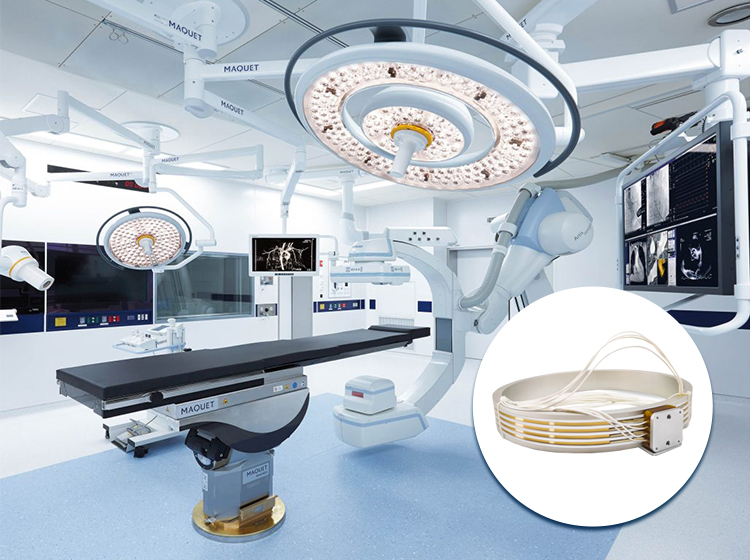
Criteria for Choosing Slip Ring Manufacturers
Selecting the right slip ring manufacturer is a decision that resonates through the lifespan of the equipment it supports. It’s a decision that impacts not just the immediate application but also the long-term efficiency, safety, and operational costs. This section outlines the factors influencing this choice, focusing on quality assurance, customization options, and the all-important manufacturer reliability and customer service.
Upholding Quality: Certifications as Trust Signals
Quality assurance is the bedrock upon which slip ring applications must be built, especially in industries where failures can have catastrophic consequences. Prospective buyers should look for manufacturers holding certifications such as ISO 9001, which demonstrates a commitment to consistent quality management practices. For medical or aerospace applications, additional certifications like ISO 13485 or AS9100 may be required, ensuring the slip rings meet the stringent standards of these sectors. These certifications aren’t just plaques on the wall but are indicators of the manufacturer’s dedication to upholding high quality in every component they produce.
Tailoring to Specifications: The Power of Customization
Not all applications can be satisfied by off-the-shelf slip ring solutions. A manufacturer’s ability to offer customization is crucial. Providers should be evaluated based on:
- Size adjustments: Can the manufacturer adapt the dimensions of the slip ring to fit spatially challenging applications?
- Capacity tweaking: Does the manufacturer have the capability to design slip rings that can handle the required power and signal loads?
- Signal compatibility: Can the slip ring be configured to support the specific types of signals used, whether they are digital, analog, high-frequency, or data bus signals?
A real-world example might be a marine research vessel that needs a customized slip ring for subsea equipment, capable of withstanding high pressures and corrosive elements, while transmitting detailed data back to the surface. A manufacturer poised to customize offers a solution that is not just a product, but a puzzle piece completing the greater picture of the application.
Assessing Manufacturer Reliability and Customer Service
Beyond technical capabilities, reliability, and customer service, are pivotal factors. A dependable manufacturer means reduced downtime and smoother operations. Evaluate manufacturers based on:
- Track record: What do their past projects and testimonials say?
- Support responsiveness: Are they prompt and proactive in addressing customer concerns?
- After-sales service: Do they offer comprehensive maintenance and repair services?
Consider the case of a theme park that experiences a slip ring failure on a critical ride. Fast and effective service from the manufacturer can mean the difference between a minor hiccup in operations and significant revenue loss with a tarnished reputation.
Global Slip Ring Manufacturers: A Comparative Analysis
In the global landscape of slip ring manufacturing, standout players distinguish themselves through innovation, quality, and service. Given the critical nature of slip rings in various applications, the criteria for selecting a manufacturer become more acute on the international stage. Taking a closer look at the leading global manufacturers, the effect of their geographic presence, and real-world commendations can provide deeper insights into making an informed supplier choice.
Dossier on Leading Global Manufacturers
The market boasts a diverse array of manufacturers, each with their specialties and areas of expertise:
- Moog Inc.: Renowned for its high-quality designs, Moog is a frontrunner in providing slip rings for aerospace and defense, alongside industrial and medical applications. Their commitment to innovation is evident through their custom solutions and reliable products built to operate in extreme environments.
- Schleifring GmbH: A giant in the field, Schleifring GmbH is synonymous with tailor-made slip rings for a variety of market segments, particularly in medical engineering. Their strength lies in their research and development efforts that lead to cutting-edge solutions.
- Coresch Inc.: Specializing in miniature slip rings, Coresch is known for products that strike a fine balance between performance and size, marking it as a leader in this niche market, catering especially to robotics and compact industrial machinery.
These profiles reflect just a glimpse of the extensive range encompassed within the slip ring industry, with each manufacturer bringing unique strengths to the table.
Geographic Influence on Supplier Choice
The geographic location of a manufacturer plays a significant, albeit often overlooked, role in the decision-making process. Proximity to the supplier can be advantageous for:
- Reduced lead times: A manufacturer in the same or a nearby country can often deliver products faster than one further afield.
- Logistics: Favorable shipping costs and fewer customs complications are more likely with a geographically closer supplier.
- Local support: Access to quicker, possibly in-person technical support can streamline maintenance and operational issues.
However, technological advancements and improved logistics networks have somewhat lessened the impact of distance, enabling manufacturers to offer competitive services globally.
Case Studies Showcasing Manufacturer Excellence
Real-world testimonials often paint the clearest picture of a manufacturer’s competence:
- Wind Power Prowess: A case involving Moog Inc. involved delivery of a custom slip ring for an offshore wind turbine project, where reliability in harsh environmental conditions was paramount. The successful implementation led to increased energy efficiency and bolstered Moog’s reputation for excellence in renewable energy applications.
- Medical Marvels: Schleifring GmbH’s work with leading CT scanner producers is a testament to their high-quality medical slip rings that boast both ultra-reliability and high-speed data transfer capabilities, critical for saving lives and improving patient outcomes.
Challenges Facing Slip Ring Manufacturers
The manufacturing of slip rings, while seemingly straightforward, is fraught with complexities spanning the technical, economic, and regulatory spectrums. Manufacturers must navigate these waters with a blend of ingenuity, flexibility, and foresight. A detailed examination of these challenges can shed light not only on the intricacies of slip ring production but also on the broader context in which these devices must function.
Navigating Technical Complexities in Design and Manufacturing
Slip ring design and manufacturing are far from static. They involve a tailored approach to meet varying operational specifications:
- Meeting Diverse Application Needs: The technical diversity from wind turbines to medical systems requires unique designs that can adapt to the dynamic conditions of each application while maintaining reliability and performance.
- Miniaturization and Complexity: As devices become more compact, the demand for smaller, yet more complex slip rings increases. This miniaturization challenge necessitates precision engineering at microscopic levels, a task that calls for both advanced technology and skilled craftsmanship.
A poignant case study exemplifying this is the development of slip rings for use in space satellites. Here, the need for devices that can operate in extreme temperatures, resist radiation, and provide unfailing longevity is paramount, pushing the envelope of technical design capabilities.
Economic Pressures Influencing Production and Pricing
Economic factors cast a tall shadow over the manufacturing process:
- Material Costs: Fluctuations in the cost of metals and other raw materials directly affect manufacturing expenses and pricing structures. The recent copper pricing surge, for instance, has had a considerable impact, given the metal’s extensive use in slip ring contacts and conductive paths.
- Global Competition: Competing with manufacturers from across the globe, each taking advantage of differing labor costs and economic scales, sets a challenging climate where balancing cost-effectiveness with quality is key to survival.
An example of an economic conundrum is found in the response of a European slip ring manufacturer to the rise of low-cost competitors from Asia. By focusing on specialized, high-quality slip rings instead of mass-produced commodities, the manufacturer has managed to carve out a sustainable market niche.
Addressing Environmental and Regulatory Hurdles
Lastly, the environmental and regulatory frameworks present their own set of hurdles:
- Sustainability Initiatives: Increasing demand for environmentally sustainable practices means manufacturers must invest in greener production methods, which can be cost-intensive initially even if beneficial in the long run.
- Compliance with Standards: Keeping pace with evolving international standards and regulations, such as RoHS (Restriction of Hazardous Substances) and WEEE (Waste Electrical and Electronic Equipment), necessitates ongoing adjustments to manufacturing processes.
For instance, manufacturers had to rethink their designs when lead, commonly used in electrical components, was significantly restricted under RoHS guidelines, prompting a shift towards lead-free alternatives without compromising the functionality or durability of the slip rings.
The Future of Slip Ring Manufacturing
The world of slip ring manufacturing is on the cusp of transformative change, influenced by both technological advancements and shifts in market demand. As we look toward the future, a trio of distinct areas emerges as focal points for the industry’s evolution: the advent of new technologies, predictions for market growth and innovation, and manufacturers’ preparations for impending challenges. Let’s explore these elements in depth.
Emerging Trends in Slip Ring Technology
In the domain of slip ring technology, innovation is not merely incremental but often leaps forward, ushering in a new era of capabilities and applications.
- Wireless Slip Rings: Imagine transmitting power and data without physical contact. Wireless slip ring technology, grounded in magnetic induction and radio frequency (RF) systems, is making this possible. It promises to revolutionize industries by eliminating wear and tear, reducing maintenance, and improving reliability in hostile environments.
- Fiber Optic Slip Rings: With the exponential increase in data transmission requirements, fiber optic technology is becoming more prevalent in slip rings. Offering unparalleled data speeds and bandwidth, these systems cater particularly well to applications such as high-speed cameras and advanced surveillance systems where rapid and voluminous data transfer is critical.
These advancements are exemplified by the development of wireless slip rings in wind turbines, which dramatically reduce maintenance costs and downtime by eliminating the need for physical contact and thus wear and tear on components.

Predictions on Market Growth and Technological Innovations
The slip ring market is poised for significant growth, propelled by industrial expansion and the advent of sophisticated technologies.
- Market Expansion: With the automation of manufacturing processes and the surge in renewable energy projects, the demand for slip rings is expected to rise steadily. The increasing reliance on robotics across various sectors, from automotive to healthcare, further amplifies this growth.
- Technological Frontiers: Nanotechnology and material science advancements promise to lead slip rings into new realms of performance and durability. Miniaturization trends, alongside enhanced electrical properties, foretell a future where slip rings operate with unparalleled efficiency and in increasingly compact applications.
A case in point is the integration of nanomaterials in slip ring contacts, improving electrical conductivity and thermal management, thereby extending their lifespan and reliability in critical applications.
Preparing for Future Demands
Manufacturers are proactively gearing up to meet the future head-on, embracing both challenges and opportunities.
- Investment in R&D: Leading manufacturers are heavily investing in research and development to pioneer new technologies and materials that meet emerging market needs, emphasizing sustainability and efficiency.
- Training and Development: Recognizing that tomorrow’s challenges require skilled hands and innovative minds, companies are prioritizing the training and development of their workforce, ensuring they remain at the forefront of industry advancements.
- Strategic Partnerships: Collaboration between slip ring manufacturers and technology firms is fostering cross-industry innovation, accelerating the development of next-generation slip rings. These partnerships are pivotal in translating cutting-edge research into practical, market-ready solutions.
An illustrative scenario of preparation for future demands is seen in how manufacturers are embracing industry 4.0 principles, automating production lines to increase efficiency, and reduce human error, thus ensuring they can keep pace with the expected uptick in demand and complexity of future slip ring solutions.
Selecting the Right Slip Ring Manufacturer for Your Needs
As we conclude this comprehensive exploration of slip ring manufacturing, it’s imperative to circle back to the primary objective of this journey: equipping you with the knowledge to select the slip ring manufacturer that aligns perfectly with your specific requirements. The discussions have traversed the complex landscape of design and manufacturing challenges, the burgeoning trends on the horizon, and how manufacturers are gearing up for the future. Here’s a recap of the essentials and guidance on navigating the selection process.
Recap of Key Points Discussed
We’ve dismantled the technical intricacies of slip ring manufacturing, revealing the careful balance between innovation and practical application. Emerging trends, such as wireless and fiber optic slip rings, signal a future ripe with potential for transformative applications across industries. Simultaneously, the forecasted market growth and technological advancements underscore the sector’s dynamic nature, urging manufacturers to remain agile and forward-thinking.
The Importance of Thorough Evaluation
Selecting a slip ring manufacturer is not a decision to be taken lightly. The right partnership can elevate a project, bringing innovation, efficiency, and reliability to the forefront. It necessitates a thorough evaluation based on the outlined criteria:
- Technical Expertise: Look for a manufacturer with a robust portfolio that demonstrates their capacity to innovate and customize solutions tailored to diverse application needs.
- Quality Standards: Assess their commitment to quality through certifications and compliance with international standards, which speak volumes about their dedication to excellence.
- Market Reputation: Delve into their market reputation, seeking feedback from existing clients to gauge their reliability, customer service, and after-sales support.
- Future-Readiness: Consider their stance on emerging technologies and trends. A manufacturer invested in research and development is a tell-tale sign of future readiness.
Engagement with Manufacturers for Specific Project Needs
Embarking on a dialogue with potential manufacturers is perhaps the most critical step. It allows you to:
- Clarify Project Specifications: Openly discuss your project’s specific needs, challenges, and expectations. This exchange can reveal the manufacturer’s capability to offer customized solutions.
- Evaluate Collaboration Potential: The manner in which a manufacturer engages with your queries can offer insights into the collaborative potential of the partnership.
- Discover Innovations: Manufacturers often have innovative solutions up their sleeves that you might not have considered. Engaging in dialogue can uncover these gems, providing you with a competitive edge.
A compelling example to illustrate the importance of this engagement is the scenario of a medical equipment manufacturer in need of a highly specialized slip ring for an MRI machine. Through in-depth discussions and collaborative development efforts, the slip ring manufacturer was able to deliver a custom solution that met the stringent requirements for reliability and safety, significantly enhancing the MRI machine’s performance and patient comfort.
See What We Can Do

